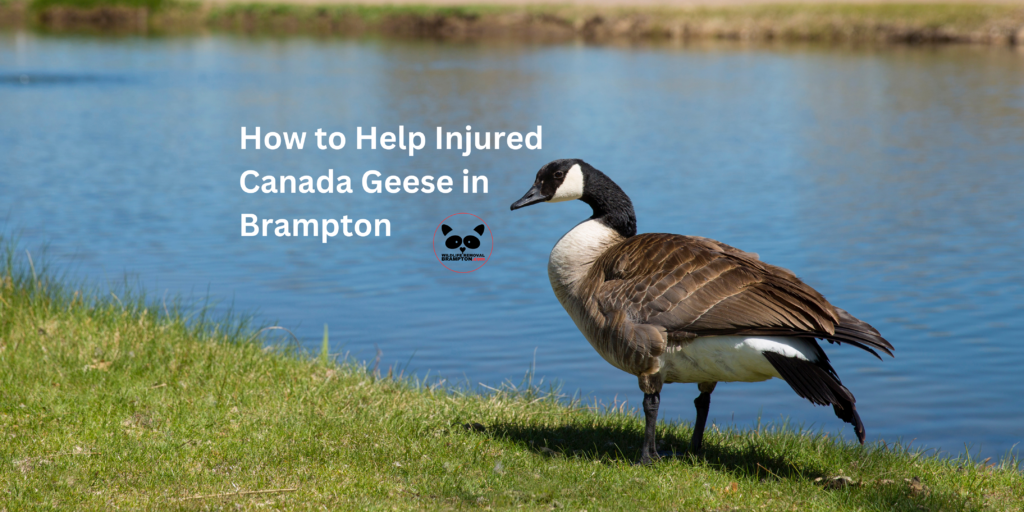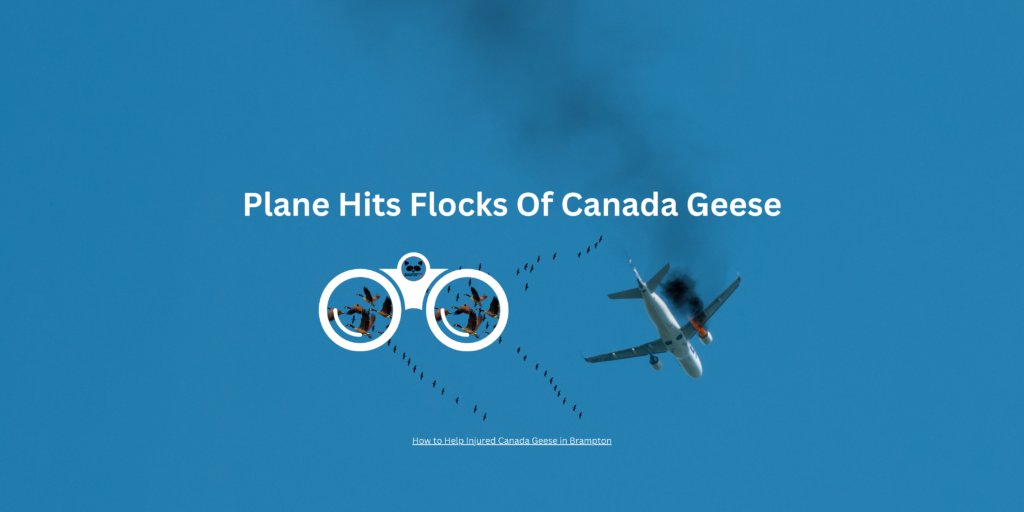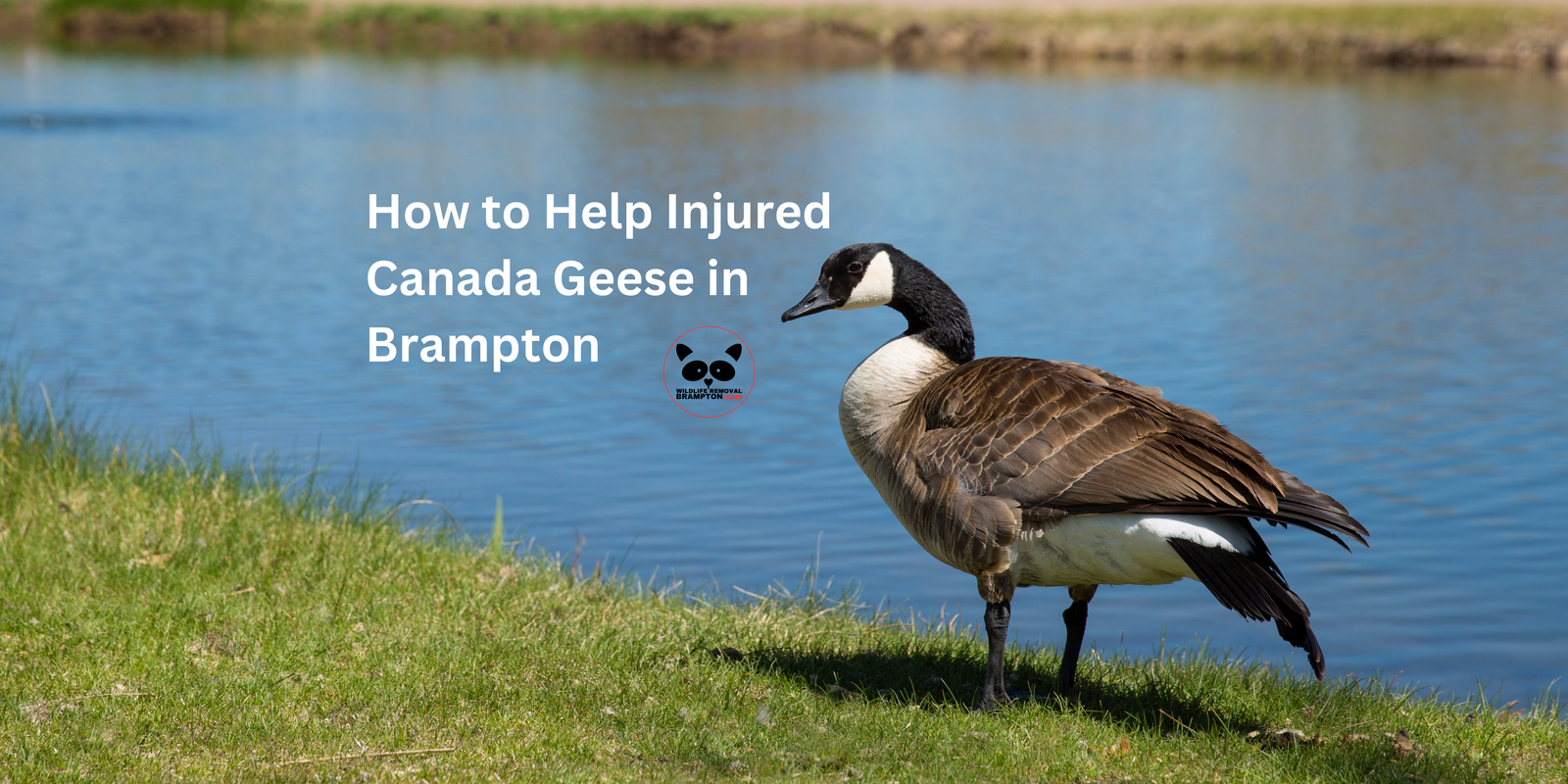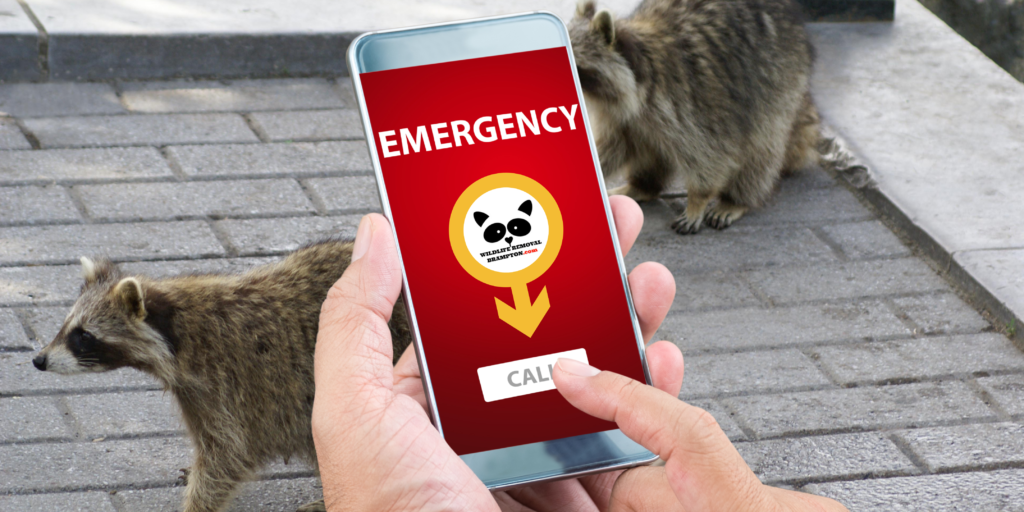What You Should Do
- Keep Your Distance: Maintain a safe distance to avoid stressing the bird further and to allow you to assess the situation accurately. Remember, Canada Geese can be defensive if threatened.
- Observe the Goose: Please be sure to look for visible signs of injury or distress, such as limping, bleeding, or an inability to fly, and note these observations, as they will be helpful when contacting wildlife authorities.
- Contact Wildlife Rescue: Call 3-1-1 to contact the City of Brampton Animal Services or a local wildlife rescue organization like the Toronto Wildlife Centre or another nearby service that can provide expert care.
What You Shouldn’t Do
- Do Not Touch or Capture the Goose: Handling a Canada Goose can be dangerous and is often illegal without authorization, as these birds are protected under the Migratory Birds Convention Act.
- Do Not Feed the Goose: Feeding might cause dietary problems or attract predators, which could further complicate the situation.
- Do Not Ignore Local Laws: Always adhere to local wildlife laws designed to protect animals and the public.
By following these guidelines, you can help ensure the best possible care for an injured Canada Goose and stay within the legal framework intended to protect such wildlife.

Goose Species
There are many species of geese in North America. The giant Canada Goose is the largest subspecies of Canada geese, sometimes referred to as ‘hissing cobra-chickens’, are a beloved species that can be found in a diverse range of habitats, including suburban areas, in parks, near ponds or rivers, on golf courses, and in urban environments. Their scientific name is Branta Canadensis. Canada geese are sometimes confused with Cackling Goose, which is one of the seven subspecies of the Canada goose, although Cackling geese have shorter necks and smaller bodies. Contrary to popular belief, Canada geese are not called Canadian geese or Canadian goose; Americans call them Canadian geese quite often, but they’re just called Canada geese. There’s nothing quite like seeing Canada geese fly, a group of these majestic birds flying in their V formation overhead urban and suburban areas. Unfortunately, human activity and natural causes can sometimes endanger these creatures. That’s where this comprehensive guide comes in. Our commitment to conservation means that we want to provide useful information for protecting and assisting injured Canada geese. Whether you spot a stranded bird in a parking lot or come across an injured goose in a nearby park, this guide serves as a valuable resource for ensuring these beautiful creatures can continue to thrive in the wild.
Understanding Canada Geese
Before delving into the specifics of aiding different species of injured geese, it’s crucial to have a basic understanding of Canada geese. Spring migration marks the arrival of Canada geese, and it’s quite a sight to behold. Each winter Canada geese migrate to the Southern United States and even to some parts of Mexico. They form large groups and fly in v formation flocks, making it easy to spot them in the sky. These birds are a testament to nature’s glory, and it’s fascinating to understand their way of life. Canada geese mate for life and raise their young together in a family unit. If their mate dies, they will look for other geese to pair up with in the future. During their migration before breeding season, they choose mates and find their way to their breeding grounds to build a nest in Canada. However, their journey is not without obstacles. Sometimes, geese get injured due to vehicle collisions, window strikes, or natural predators. Understanding their behavior and needs is crucial to protecting this magnificent bird species.
Why Canada Geese are sometimes vicious to humans
Canada Geese are fascinating creatures that form tight-knit groups for their migration and have remarkable ability to navigate long distances using their their natural resources to progress. During springtime, these birds choose mates and start building their nests in the grass. A female goose will pull downy feathers from her chest area to line the nest. When the female goose lays her precious eggs, she becomes fiercely protective of them and will do anything to ensure their safety. This is why Canada Geese may sometimes act viciously towards humans who get too close to their nests. However, despite their protective nature, these birds are a vital part of our environment and have a remarkable role to play in the circle of life. From their beautiful feathers to their graceful flights, Canada Geese are a true wonder to behold. Most geese form groups and, during the spring season, after migration, look for suitable habitats to nest and lay eggs in.
Goose Egg Addling – What is it?
Unfortunately, due to over-populations of Canada geese, it has become necessary for agencies and environmental specialists to perform goose egg addling. This process involves covering the eggs with corn oil, which deprives the embryo of oxygen, causing it to die. While the mother goose sits in the nest, unaware of the addling, it ultimately ensures that fewer goslings are born, meaning that the overall population is reduced. Otherwise, if the agency were to simply remove the eggs, the mother goose would only lay more eggs. Addling may seem harsh, but it is necessary to maintain a healthy balance of Canada geese and other species in our parks and ponds.

U.S. Flight 1549 – January, 2009
In the winter of 2009, a U.S. Airways Airbus A320 had to make an emergency landing, near Manhattan, in the Hudson River when the plane hit flocks of Canada geese. Both engines failed and the plane was successfully landed in the river with no casualties. The U.S government, after determining the cause, addled more than 1,700 Canada goose eggs in the New York area.
Identifying an Injured Goose
Identifying an injured goose is the first step in providing assistance. Signs of injury include:
- Limping or inability to stand
- Visible wounds or bleeding
- Difficulty or inability to fly
- Signs of distress such as excessive vocalization or isolation from the flock
Wild geese are beautiful birds that are a common sight for many of us, whether they are flying overhead in large flocks, waddling around a local pond, or nesting in the grass. Other different species of geese are pretty to watch as well, but there’s something special about seeing a flock of Canada Geese up in the sky. However, as fall approaches, geese face various risks, including the hunting season, domestic dogs, other species of birds, and even humans or other animals. Unfortunately, predators may also pose a threat to the safety of their eggs. All of these risks can cause injuries that leave the geese limping or unable to fly, which are signs of distress. It’s important to pay attention to these signs and provide assistance when available. Additionally, during the fall, geese shed their down feathers, which may also affect their flight. Being aware of these potential hazards and knowing how to identify an injured goose are crucial steps in helping these magnificent birds.
Do Not Feed Canada Geese (or any other geese)
Many people enjoy feeding Canada geese and other birds in urban and suburban areas, but it’s important to be mindful of what we feed them. While bread, crackers, and popcorn may seem like harmless treats, but they’re actually the avian equivalent of junk food. Geese and other birds need a varied diet to stay healthy, and filling up on high-carb foods can prevent them from seeking out the nutritious grasses and other sources of food they need. This can lead to a range of health problems for the birds, from obesity to malnourishment. Please let them alone to find food. To be humane and help support the health of our local bird populations, it’s best to not feed ducks and geese, let them forage for the types of food they can naturally find in their habitats. In addition, feeding the geese will tend to make them stick around in your area, and they’ll get accustomed to getting fed by humans.
Steps to Assist an Injured Goose
1. Safety First
Prioritize your safety and the safety of others. Approach the goose calmly and quietly to avoid causing additional stress. If the Canada goose is in a dangerous location, such as a busy road, assess the situation carefully before attempting a rescue.
2. Secure the Goose
Gently capture the Canada goose using a blanket or towel to minimize stress and prevent it from fleeing. Wrap the blanket around the goose, covering its wings and head gently but firmly. Check that there are no goose eggs in the nest under her (or him).
3. Prepare for Transport
Place the goose in a ventilated box or pet carrier lined with towels for comfort. Ensure the carrier is secure to prevent escape during transport. Do not feed the goose.
4. Seek Professional Help
Immediately contact a local wildlife rehabilitation center or a veterinarian experienced with wild bird species. Provide details about the goose’s condition and your location.
5. Transportation
Carefully transport the goose to the nearest animal rehabilitation center or veterinarian, following their instructions.
Wildlife Rehabilitation Centers
Wildlife rehabilitation centers play a crucial role in the recovery of injured geese. These facilities are equipped with the expertise and resources necessary to provide medical care, rehabilitation, and eventual release back into the wild. When contacting a center, be prepared to provide detailed information about the goose’s condition and the circumstances of the injury.
How You Can Help
Volunteer and Support
Consider volunteering your time or providing financial support to wildlife rehabilitation centers. These non-profit organizations rely on donations and volunteers to continue their valuable work for the goose species all across North America.
Educate Others
Spread awareness about the importance of protecting Canada geese along with various other animals too. Educating your community can lead to more informed and compassionate responses to animals and birds in distress.
Create a Safe Environment
Advocate for measures that reduce the risk of injury to the goose species, such as slower speed limits near wetlands, safer window designs, and restrictions on the use of harmful chemicals on grass areas in their habitat.
Respect Wild Animals
Wild birds and animals are an integral part of our natural ecosystem and Canada geese are no exception. These majestic creatures are known for their distinguished black head with a white chinstrap, and brown backs, their large v formation migration flights, and their distinct honks that announce their arrival. In spring, they gather in flocks and choose their mates before building their nests using plant material available in their habitat. Although they can appear harmless, most geese can be quite menacing when provoked, especially when their offspring are in danger from predators or humans. It’s important to respect their space and observe them from a distance. Feeding them may seem like the right thing to do, but it can lead to unhealthy dependencies and an increased risk of injury. So, let’s take care of the Canada goose and it’s habitat, and let them live in peace.
Conclusion
The protection and care of injured Canada geese require a community effort. By following the guidelines provided in this article, you can make a significant difference in the lives of these remarkable birds. Together, we can ensure a safer and more compassionate coexistence with the wildlife that shares our environment.



